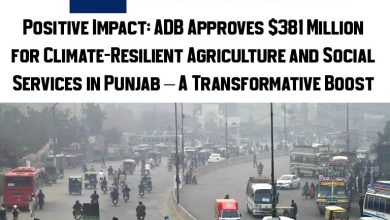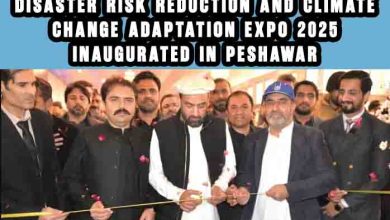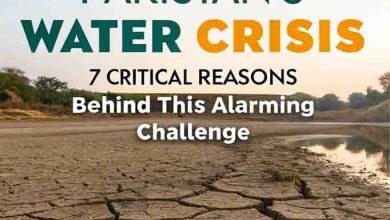Authorities oblivious as water crisis threatens food, national security
Daily Times, June 27, 2022
Political and economic problems continue to dominate the headlines even as Pakistan’s water crisis threatens to devastate the agriculture sector and agri-driven export industry and cause severe droughts in several areas.
Yet not much is being done to resolve the issue, which shows it is not getting the attention it deserves at the highest level.
“There has not been sufficient focus on tackling the water crisis by investing in water governance, safeguarding water resources or building small and localized dams for water conservation,” said Arif Jabbar Khan, country director for Water Aid Pakistan.
“Institutional confusion over responsibilities for provision of water and water management has been another important problem at the national and provincial level.”
The crisis not only impacts Pakistan’s agriculture sector, which contributes to 23 percent of the nation’s GDP, but is also an existential threat to energy and food security, and therefore national security.
The country faces an extraordinary water shortage of around 50 percent, the highest ever since 1991. Experts have been warning for months that 26pc less snowfall than last year in winter, followed by negligible rainfall in March and April, meant very serious water problems this year, yet it raised no red flags in Islamabad.
The slower melting of glaciers has also drastically increased shortages in the system and drained the country’s two largest reservoirs – Tarbela and Mangla – causing them to hit dead level much earlier than authorities expected.
“Water disputes between provinces have also worked as catalysts in deteriorating the situation,” said Khan.
Water from the Indus River has now been reduced to 40 percent of its normal flow, which is causing the worst shortages in decades in areas in southern Punjab and Sindh. Agriculture is the largest consumer of water, with 97 percent of Pakistan’s freshwater being used by this sector. A large number of people in the affected districts are on the verge of losing their crops and animals.
Besides water deficiency and drought, other issues including water-logging and salinity continue to affect Pakistan’s crops. As a result, an estimated shortage of 70 million tons of food is anticipated by 2025. That, in turn, will put more pressure on local employment, the trade balance as well as current account when the government is already struggling to secure loans for its survival.
The present situation is just another reminder that Pakistan may become the most water-stressed nation in the region by 2040 due to climate change, population explosion, mismanagement of water resources and more.
“Water Crisis in Pakistan: Manifestation, Causes and the Way Forward,” a report published by the Pakistan Institute of Development Economics (PIDE), offers statistics about the issue, highlighting its magnitude.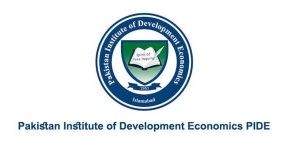
Pakistan ranks 14th among the 17 ‘extremely high water-risk’ regions in the world. Moreover, more than 80pc of its population faces ‘severe water scarcity.’ Total water availability plunged from 5,330 cubic meters per inhabitant at the time of independence to just 1,187 in 2017.
Pakistan’s water troubles are not limited to surface water. Ground water resources have also been severely depleted for the purpose of irrigation.
“Groundwater supplies 90pc of domestic water in rural areas of Pakistan, 70pc of domestic water nationally, and over 50pc of agricultural water,” Khan added.
It plays a pivotal role in mitigating the impact of increasingly variable canal water supply and rainfall. Yet, despite Pakistan’s dependence on groundwater, its deteriorating condition remains poorly understood and the country has long failed to develop an evidence-based, sustainable groundwater management program, he went on to explain.
Rafay Alam, a renowned Pakistani environmental lawyer and activist added that there was a drinking water crisis all over Pakistan, but that’s because drinking water mostly comes from the ground.
“The Ravi and the Bayas, the two rivers that surround Lahore from the north and the south, we’ve given their water to India according to the Indus Water Treaty,” he said.
“So, the waters of the Bayas and the Ravi no longer flow into Pakistan. As a result, Lahore, which pumps water from the ground, has no replenishable aquifer, because the two rivers that used to feed its aquifer have been given to India.”
One indicator underlining the seriousness of this issue is the water withdrawal rate, which may be defined as the amount of water withdrawn from a source. Pakistan is ranked 160th, only better than 18 countries, in regard to water withdrawals to water resource ratio. The country treats only one percent of wastewater and around 40pc of water in Pakistan is lost due to spillage, seepage and bank cuttings.
When asked about steps to be taken to alleviate the water shortages faced by the nation, Alam was adamant that “Water use has to be regulated.” He went on to say, “In a water scarce place like Karachi, it is inhuman to have a lawn or a swimming pool. Whenever I see a swimming pool in Karachi, that means some family somewhere else isn’t getting water. They are wasting 30,000 liters of water for recreation. Stuff like this has to stop.”
Water Aid Pakistan provides clean drinking water services in areas with high water scarcity.
“In Muzzafargarh, Karachi and Islamabad we have introduced a community enterprise model to manage water filtration plants, where communities take ownership of running water filtration plants by selling water to the users at nominal cost and the money earned from the sale is used for the operation and maintenance of the water filtration plants,” said Arif.
At a water sale point in Muzzafargarh, a community representative has set up a stall, where the water is being sold for one rupee per litre as compared to 30 rupees per litre set by the companies.
In the last year, WaterAid’s water supply schemes have benefitted over 53,000 users in Mazzafargarh, Humak, Karachi, Thatta and more.
When questioned about the steps authorities have taken to resolve the crisis, Faakhar Raza, the Regional Director at the Lahore Branch of the Pakistan Council of Research in Water Resources (PCRWR) said, “In areas with high rainfall, instead of letting rainwater go to waste or pollute freshwater bodies, we used to harvest this rainwater and recharge our groundwater aquifers.”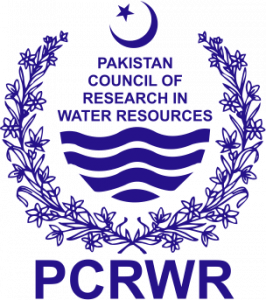
In a recent project in Islamabad, more than 120 recharge wells were installed to harvest and filter rainwater, measuring water quality simultaneously. This is known as the ‘manage aquifer recharge’ technique through recharge wells.
They have also implemented a National Water Quality Monitoring Program in their laboratory network nationwide. “The results are slightly encouraging,” he said.
“When we started [in October 2021], 19pc of water supplies were considered safe to drink. This has now increased to 40pc. However, we’ve internationally committed, in accordance with the Sustainable Development Goals (SDG 6), to supply 100pc safe drinking water by 2030.”
When pressed about future timelines and funding requirements for project-based solutions, experts respond in vague terms, reiterating that the scale of the crisis is such that the development, public and private sectors must work together to tackle the issue. Although many have brilliant ideas for future projects, developing actionable plans immediately must be the focus in order to effectively mitigate this crisis.
To ensure water security, there has to be a meticulous review of the 1991 accord, incorporating into it water conservation, governance, storage and usage strategies. Furthermore, there is an immense need to upgrade irrigation systems around the country, which can be done by improving operation (inflow rate and time to irrigation cut-off) and field design (width/number of furrows per set and field length). The construction of additional water reserves such as dams and canals can also go a long way in reducing water scarcity.
“Pakistan’s first National Water Policy, formulated in 2018, set priorities for water resource management. Unfortunately, since the policy was developed, its implementation has not been carried out in a timely manner. This may be due to infrastructural and financial issues and generally, a national approach towards problem solving,” said Raza.
Furthermore, Pakistan’s National Water Policy does not pay enough attention to water-sensitive urban design, risk management against natural hazards and trade in water-intensive crops. Policies to combat these challenges should include customized, location-specific solutions which address the topography and socioeconomic context of the setting.
The present coalition government, which draws support from political parties representing different provinces and regions of the country, has an excellent opportunity to achieve a consensus on the management of this crisis, which threatens food and economic security, along with inter-provincial harmony.
Pakistan’s biggest existential challenge, along with it management, needs to be prioritized before it is too late.




